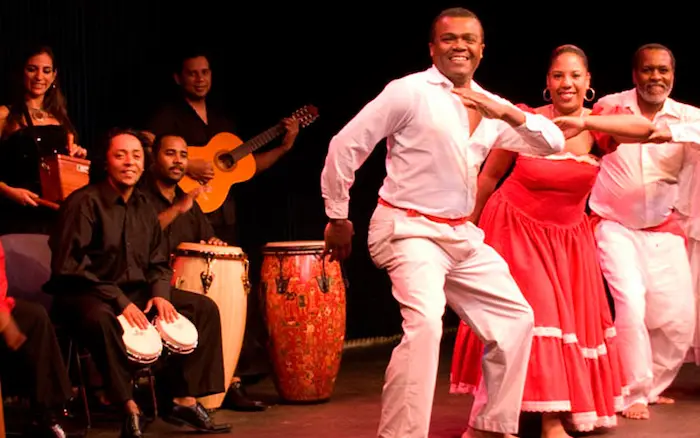Rumba music has deep roots in Cuban culture. It originated in the western regions of Cuba, particularly in the provinces of Havana and Matanzas. This music genre developed in the late 19th century among African slaves and their descendants. It is a synthesis of African rhythms and Spanish melodies, reflecting Cuba’s colonial history.
I. Historical Background
1. African Influence
The African influence on rumba is profound. Enslaved Africans brought their musical traditions to Cuba. These traditions included drumming, dancing, and call-and-response singing. The rhythms and instruments used in rumba can be traced back to African music.
2. Spanish Influence
Spanish colonizers also impacted rumba. They introduced string instruments and melodic structures. The fusion of African rhythms and Spanish melodies created a unique musical style. This blend is evident in the instrumentation and structure of rumba music.
II. The Three Main Styles of Rumba
1. Yambú
Yambú is the oldest style of rumba. It is slow and smooth. The dance mimics the movements of an elderly person. Yambú is performed with a couple. The male dancer tries to entice the female dancer with subtle movements.
2. Guaguancó
Guaguancó is a more dynamic style. It is characterized by its lively rhythm and fast pace. The dance involves a “vacunao” or “vaccination,” a symbolic gesture made by the male dancer towards the female dancer. This style is the most popular form of rumba.
3. Columbia
Columbia is the fastest style of rumba. It is a solo male dance. The dancer shows off his agility and strength. The movements are highly energetic and acrobatic. Columbia often includes the use of props, such as knives or candles.
III. Instruments Used in Rumba
1. Drums
Drums are the backbone of rumba music. The primary drum used is the conga drum. Conga drums come in three sizes: quinto, tres dos, and tumbadora. Each drum plays a specific role in the ensemble.
2. Claves
Claves are wooden sticks that produce a sharp, clicking sound. They play a crucial role in maintaining the rhythm. The clave pattern is the foundation of rumba music.
3. Cajón
The cajón is a wooden box drum. It was originally used by dockworkers in Havana. The player sits on the box and strikes the front surface to produce different tones.
4. Other Instruments
Other instruments used in rumba include the maracas, guiro, and cowbell. These instruments add texture and complexity to the music.
IV. The Cultural Significance of Rumba
1. Social Function
Rumba music has a social function in Cuban culture. It is often performed at community gatherings, festivals, and celebrations. Rumba brings people together and fosters a sense of community.
2. Expression of Identity
Rumba is an expression of Afro-Cuban identity. It reflects the history and experiences of African descendants in Cuba. Through rumba, performers celebrate their heritage and assert their cultural identity.
V. Evolution of Rumba
1. From the Streets to the Stage
Initially, rumba was performed in the streets and courtyards of Havana and Matanzas. It was a form of street performance, accessible to the public. Over time, rumba transitioned to the stage. It gained recognition as a legitimate art form.
2. Influence on Other Genres
Rumba has influenced various other music genres. These include salsa, son, and mambo. The rhythmic patterns and dance moves of rumba have been incorporated into these styles. Rumba’s impact on Latin music is undeniable.
3. International Recognition
Rumba has gained international recognition. It has been performed in venues around the world. In 2016, UNESCO declared Cuban rumba an Intangible Cultural Heritage of Humanity. This recognition highlights the global importance of rumba.
VI. Rumba Today
1. Modern Performances
Today, rumba is performed by professional ensembles and folkloric groups. These performances often include elaborate costumes and choreography. Modern rumba groups continue to innovate while respecting traditional elements.
2. Education and Preservation
Efforts are being made to educate people about rumba. Workshops and classes are held to teach the rhythms, dances, and history of rumba. These initiatives aim to preserve this important cultural heritage for future generations.
3. Festivals and Competitions
Rumba festivals and competitions are held annually in Cuba and abroad. These events showcase the best rumba performers and promote cultural exchange. They provide a platform for artists to share their passion for rumba with a wider audience.
See Also: A Deep Dive into Rancheras: a Genre Rooted in Mexico
VII. Conclusion
Rumba music is a vibrant and vital part of Cuban culture. Its origins can be traced back to the African slaves who brought their musical traditions to Cuba. Over time, rumba has evolved and gained international recognition. Today, it continues to thrive, bringing people together and celebrating Afro-Cuban identity. The legacy of rumba lives on through performances, education, and cultural initiatives, ensuring that this rich musical tradition will endure for generations to come.

